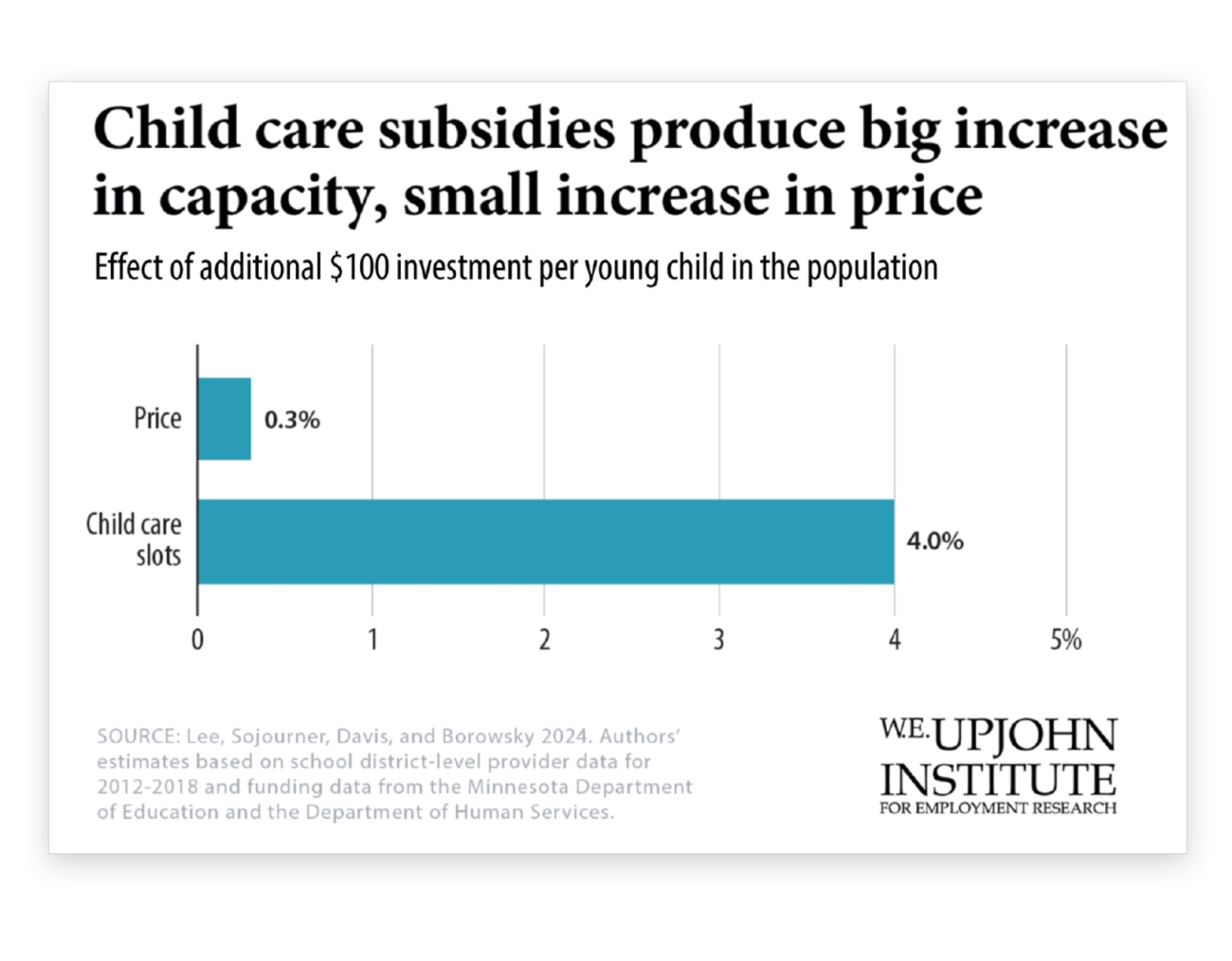
New research finds that providing subsidies to help families afford child care increases the availability of licensed providers while causing only a small increase in the average weekly price.
“Subsidies are one way to make child care affordable for families with low incomes – but there is concern that they could also raise costs for families that don’t get subsidies,” said Aaron Sojourner, a senior researcher at the Upjohn Institute and a co-author of the study. “In our study, however, the effects of increased subsidies on child care capacity are more than 10 times as large as their effects on price.”
The findings are significant because the cost and limited availability of child care can lead parents and other caregivers to exit the workforce or reduce their hours, reducing families’ financial stability of families and leaving local employers without the workforce they need. Children also miss out on the long-term benefits of high-quality child care experiences.
The study looked at how child care subsidies for parents with low incomes affected local child care pricing and capacity. Using data from Minnesota in 2012-2018, researchers found that an additional investment of $100 per child in the local population increased the capacity of licensed private providers by 4 percent and raised the average price of weekly, full-time child care by only 0.3 percent.

The researchers concluded that modest public investments in child care can have big effects when they catalyze child care markets and attract private funding. An increase of about $4,200 in public subsidies created one new full-time child care slot, which has a value of about $10,000, with the difference coming from new private spending.
The study found that the increased capacity resulted mostly from the entry rate of new child care providers. These new providers entered the market with slightly lower prices while existing providers were more likely to increase prices.
“As policymakers seek ways to increase access to affordable child care, public investments, including expanded funding for subsidies to help families pay for child care, may be a useful option to consider,” according to the study’s authors.
The study was conducted by Won Fy Lee of Stanford University, Aaron Sojourner of the Upjohn Institute, and Elizabeth E. Davis and Jonathan Borowsky, both of the University of Minnesota.

